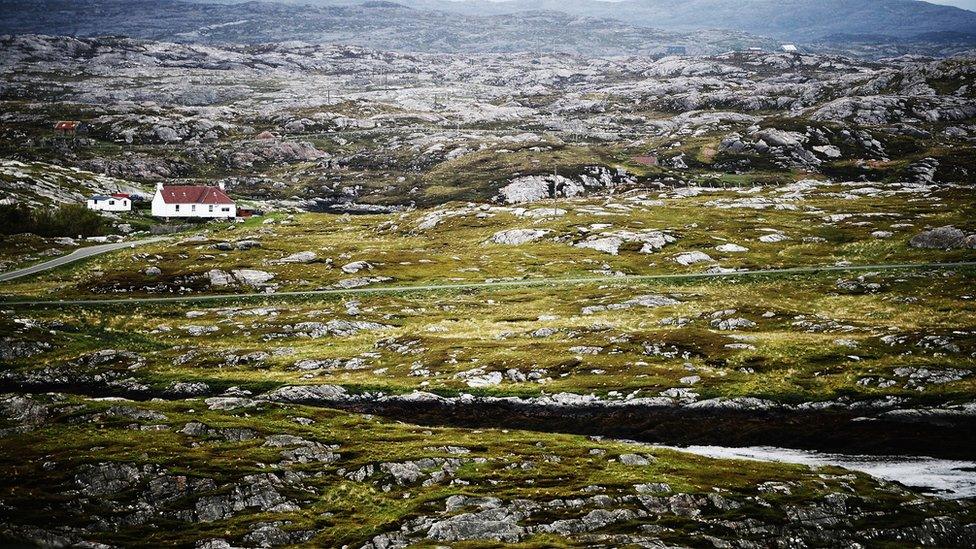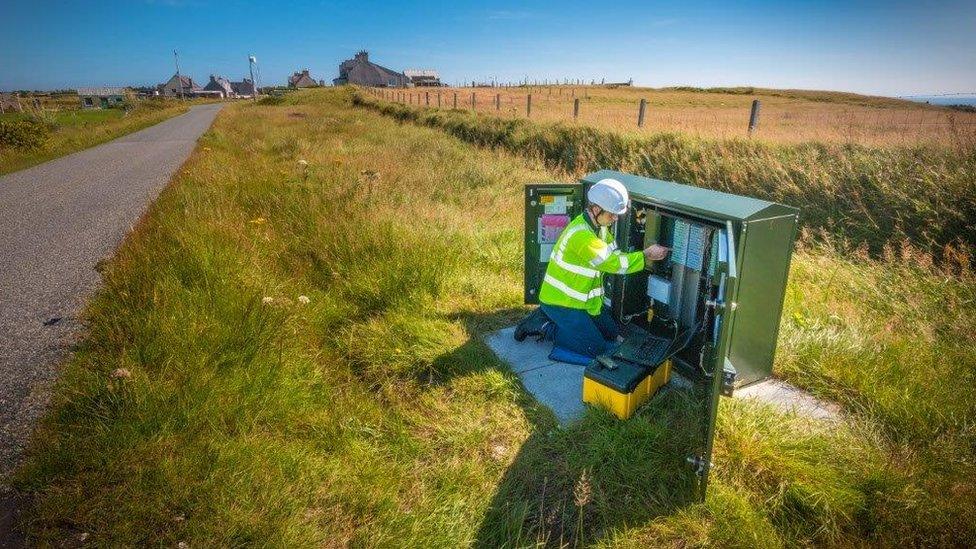Rural 'challenges' for fibre broadband roll-out
- Published

The report said getting fibre to rural areas would require more complicated and expensive engineering solutions
More than 85% of households in Scotland now have access to fibre broadband, but reaching the remaining rural areas will be a challenge, according to a report.
Audit Scotland said it expected this figure to rise to 95% by December 2017 if BT continued to meet its targets.
However, extending coverage to rural areas will require "more complicated and costly engineering solutions".
The Scottish government also has "much to do" to achieve a world class digital infrastructure by 2020, auditors said.
That included defining clearly what "world class" meant and setting out plans for how it will be achieved, the report added.
The Scottish government wants everyone in Scotland to be able to access the internet at any time and on any device by 2020.
Download speeds
To help achieve this, BT was appointed to extend Scotland's existing fibre broadband network in 2013 at a cost of £412m. Highlands and Islands Enterprise is also a key partner in extending the fibre network across Scotland.
Audit Scotland is monitoring the progress of both the roll-out and the Scottish government's digital infrastructure vision.
Caroline Gardner, auditor general for Scotland said: "Fast, reliable internet access is increasingly essential for everyday life, so it's encouraging to see good progress being made in rolling out fibre broadband.
"However, there is a lot still to be done by the Scottish government if it is to achieve its vision of a world class digital infrastructure, particularly in improving download speeds in rural areas.
"It's important that it continues to monitor the cost and progress of broadband roll-out so that these communities aren't excluded".

BT is testing new technology which it says could help more isolated rural communities
In the report, Audit Scotland found that 2.2 million out of 2.6 million premises across Scotland - 86% - had access to fibre broadband in March 2016.
Twenty-six of Scotland's 32 council areas have also met contractual targets for fibre broadband coverage, though premises in rural areas currently receive lower average speeds.
Rural Economy and Connectivity Secretary Fergus Ewing said: "Broadband and mobile coverage are of vital importance to many aspects of rural life and the rural economy and we are working hard to continue to improve both.
"With this in mind, I welcome today's Audit Scotland report, which outlines the good progress we are making in widening the access to high-speed broadband and confirms that 86% of premises across Scotland now have access to fibre broadband - 1% more than our original target.
"However, we also recognise that there is much more we can do at a Scotland-level to extend coverage, particularly to rural areas."
BT said it had started to test a new method which it hopes will increase the speed of fibre broadband over long phone lines.
The technology, known as Long Reach VDSL, is designed to help more isolated rural communities and is currently being installed in North Tolsta in Lewis on a test basis.
About 20 households in the Outer Hebrides village have been identified as suitable.
Broadband speeds can reduce over significant distances and Openreach, which looks after the telecommunications infrastructure, said it was keen to find a solution to that challenge.
Its chief executive, Clive Selley, said: "Getting faster speeds to rural communities is one of my biggest priorities, so testing new solutions in the field like this is a crucial part of that process."
More investment
Mr Ewing said the Scottish government was committed to all properties in Scotland having access to superfast broadband by 2021, with the next steps in this plan to be outlined later in the year.
But opposition parties at Holyrood have questioned whether the government can meet its target, with the Scottish Greens saying that Scotland-wide broadband in just four years looked "unrealistic".
The party has called for more investment in community broadband following the report.
Scottish Labour said the report highlighted that broadband speeds in almost two-thirds of council areas fell well below the average speed of 24Mbps.
And the Scottish Conservatives said the remainder of the broadband roll-out would be more "challenging, complicated and costly".
- Published15 August 2016

- Published7 June 2016

- Published20 April 2015

- Published31 July 2014
